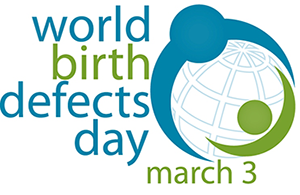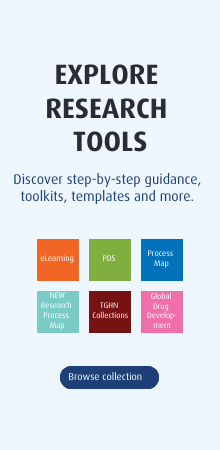News
Further Support for LMIC as WHO Releases Digital Adaption Kit for Birth Defects Surveillance
25 June 2025
Global Birth Defects (GBD) is delighted that the World Health Organisation (WHO) has released a new Digital Adaption Kit (DAK) for Birth Defects Surveillance.
Theresa Diaz, Chief, Epidemiology, Monitoring and Evaluation Unit, in the Maternal, Newborn, Child, Adolescent Health and Ageing Department at the WHO, said: “In large part due to the existence and widespread use of the Global Birth Defects Description and Coding—a mobile application for describing and coding congenital anomalies—the WHO Digital Adaptation Kit for Birth Defect Surveillance was created. This tool enables health program managers worldwide to develop applications tailored to their local settings, while aligning with WHO specifications and recommendations.”
The DAK can be found here and further information on the Global Birth Defects App can be found here.
AI assisted echocardiography to facilitate optimal image extraction for diagnosis of congenital heart defects in Sub-Saharan Africa.
3 June 2025
Please complete our survey!
The survey is open to all healthcare professionals, irrespective of field and specialty. Access the survey here: https://forms.gle/D51g3dmunedg56RYA
Sub-Saharan Africa (SSA) has the highest global burden of under-five child mortality, with congenital heart disease (CHD) being a leading cause. Improving the diagnosis of CHD is the first hurdle in tackling this burden. Paediatric cardiology centres are few and usually situated in urban areas. Telemedicine is limited by the ability of non-specialist staff to take high quality images with portable ultrasound.
As part of the DS-I Africa initiative and with support from the US National Institutes of Health, research is underway which seeks to develop AI-assisted echocardiography. This technology will empower non-specialist healthcare providers—including nurses, midwives, and medical doctors—to perform better cardiac ultrasound scans on newborns suspected of CHD, capturing high-quality images that can be sent to remote paediatric cardiologists for expert interpretation. The project is led by a multidisciplinary team of paediatric cardiologists, epidemiologists, engineers, and nurses. It is led by Health Research Foundation Cameroon, in collaboration with Ulster University (UK), University of Cape Town (South Africa), King’s College London (UK), and Imperial College London (UK). Click here to access the full study protocol.
We are conducting a survey to get the opinion of healthcare professionals in SSA and LMIC regarding the integration of AI technology into clinical practice for diagnosing CHD. Your feedback is crucial in understanding the challenges, awareness levels, and training needs associated with this innovative technology. This anonymous survey will take approximately 10-15 minutes to complete. Please click on the link at the top of this news item.
Contact PI:
Dr Aminkeng Z. Leke (PhD)
Email: leke@hrfbuea.org
The 77th World Health Assembly Resolution 2024 addresses the diagnosis, management and long-term care of children with birth defects
17 September 2024
Resolution WHA77.5, of 1 June 2024 “Accelerating progress towards reducing maternal, newborn and child mortality in order to achieve Sustainable Development Goal targets 3.1 and 3.2”
invites Member States “to consider implementing a universal newborn screening programme including comprehensive birth defect screening, including specific needs and considerations for diagnosis, management and long-term care of children with birth defects.”
This is a most welcome and major step forward in preventing mortality and child disability relating to birth defects in Low and Middle Income Countries.
New feedback on using the Global Birth Defects app in South Africa
5 June 2024
Watch here Feedback • Global Birth Defects (tghn.org)
Nursing staff, Siviwe Hendrick, Lumka Vicks and Anesipho Dlamenzi at a primary level, Gugulethu Midwife Obstertric Unit in South Africa, discuss their experiences of using the Global Birth Defects App.
Khanyisa Mandondo, a nurse at Ubomi Buhle, who regularly uses the Global Birth Defects App to record cases, discusses how easy it is to download and use the App.
If you would like to add a feedback video regarding your use of the Global Birth Defects App, please contact globalbirthdefects@tghn.org
Launch of the RELAMC Website
26 July 2023
A launch event was held on July 3, 2023 for the RELAMC website www.relamc.org
RELAMC is the Latin American network for congenital anomaly surveillance.
The website describes the network and the member registries, allows the user to obtain publicly available prevalence data tables, and provides the platform for data submission for member registries.
The launch event was co-organised by RELAMC and the Coordenação-Geral de Informações e Análises Epidemiológicas, Ministério da Saúde, Brazil. Speakers included Ieda Orioli, Theresa Diaz, Helen Dolk, Boris Groisman, Guillermo Macías, Marli Souza Rocha, Jorge López Camelo and Ignacio Zarante.
Congratulations to RELAMC for this milestone!
International Conference for Birth Defects in Developing Countries, Chile, March 2023
3 March 2023
Caroline Osoro (pictured) talked to new users about the use of the Global Birth Defects app, and how the MiMBA project has added an expert review platform which is now available to all users.
Emma Kalk, Caroline Osoro, Robert Serunjogi and Modiegi Diseko (pictured) represented the new SubSaharan Congenital Anomalies Network (sSCAN).


